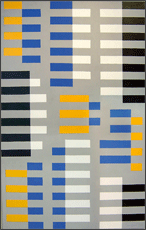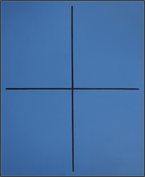Washburn Gallery – 50 years of Separation: 1940s – 1990s
April 7th – through June, 2011
more info »
A feet-on-the-ground realism was, I suspect, part of his nature. This kept him out of sync with the Mondrian idealists and may have led to some isolation. He came from a different culture – Oklahoma (he was born the year before it became a state) and a Native-American background. He brought his nature and culture to New York. In 1989 he wrote, in a splendid poetic conceit, “New York City revealed its physical self to me through the mountains and canyons of the Southwest. There were the ups and downs – the high peaks, the inbetweens, or the canyons, and topped with the great dome. I felt the city to be a perfect equation for a great abstraction…”
KUBUS in Situation Kunst (für Max Imdahl) – Raumformen /Spaceforms
May 5th – September 4th, 2011


more info »
He’s known as the initiator of the so-called Hard-Edge-Paintings, where surfaces made of unmixed, pure colours with its sharp contours clash. In the USA, Smiths’ works are found in a number of well-known and highly anticipated museum collections nationwide; however in Europe few exhibitions have taken place so far. The exhibition in Bochum is showing 22 works, created between 1953 and 1994, including paintings, so-called Torn Paper Drawings and graphics, which point out work-based progressions leading to a clear art that concentrates on colour and form, as well as comprehensive tendencies and relations in the history of paintings.


